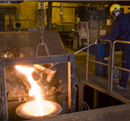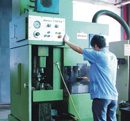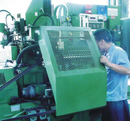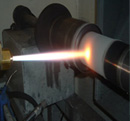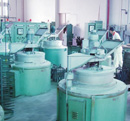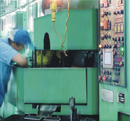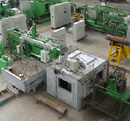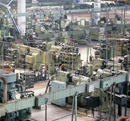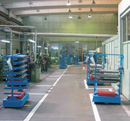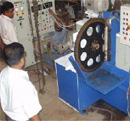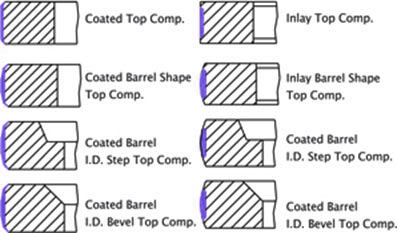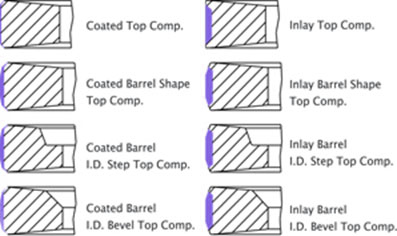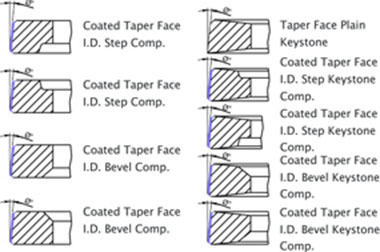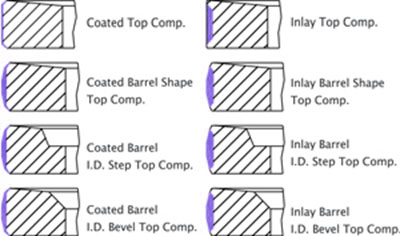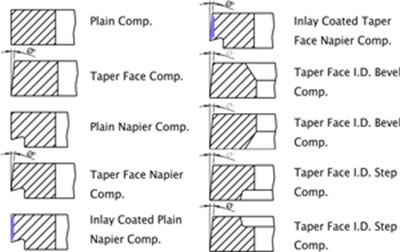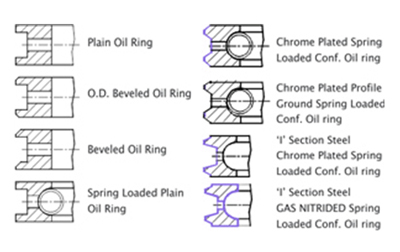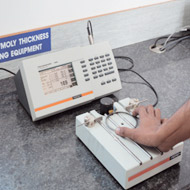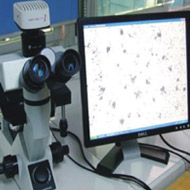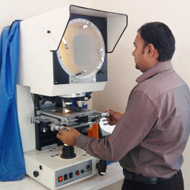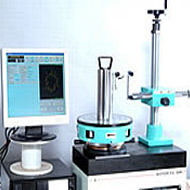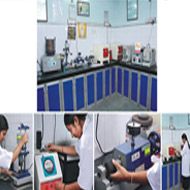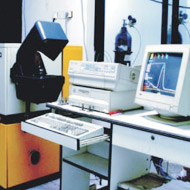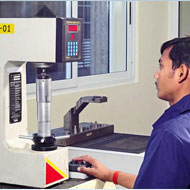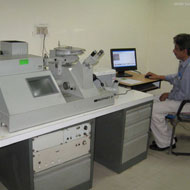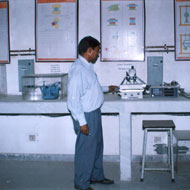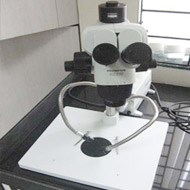
Piston Rings
| Material | Surface Coating | |||||||||||||||||||||||||||||||||||||||||||||||||||||||||||||||||||
Piston RingsThe raw material is heated in an induction furnace along with desired chemicals to temperatures of 1500-1800 centigrade, depending on the type of casting. The material is then scooped up with a ladle from the pot & then poured into stacks of pillars, created from special sand prepared from the die. This process allows the dies to readily accept the molten metal when it is poured. We take utmost care to cool the molten metal so as to get the perfect microstructure & hardness required for longer life. Thereafter, runners & risers are removed to make individual casted rings machinable. It may be noted that the individual rings are CAM Cast which means that whatever is the final free gap required in the ring is casted extra. This technique is most important for sealing the compression perfectly. The cam casting is then grinded to a specific accuracy on axial width & sorted out for blowholes. Thereafter they are cam turned for Outer Diameter(OD) & Inner Diameter(ID) on special purpose machines. The free gap in the ring is created by removing the extra casting through a process called milling, i.e., without tempering. The rings are then turned from inside as also form the outside for perfection in radial depth for it to obtain a perfect circle. The rings so produced by cam process at GOULD manufacturing, keep an equivalent outward pressure throughout the circumference of the ring. Since the rings are not heat-formed they do not loose their outward pressure even at very high temperature & give uniform compression sealing; whereas the heat-formed rings tend to loose their outward tension at high temperatures & result in blowby. Subsequently, chamfering, grooving, slotting, beveling, key stone angling or one side tapering is done in accordance with the samples or drawings. Next, the process of Pre-honing is performed on the rings to smoothen their surface for plating. Chrome Plating is then done to significantly improve the wear resistance & to provide low friction & good thermal conductivity. This also provides high hardness (Vickers 800 to 1000) & a high melting point to the ring's character. The plating on the OD is then honed for super finish & for 100% light tightness which, in turn, ensures close to 100% compression & oil sealing. As a penultimate step, the rings undergo lapping at GOULD, the process for final control of axial width with closest tolerances of 5 to 10 microns. Chemical Phosphating, a rust preventive process, is done if required by the buyer. VideoPlant Photos
|
||||||||||||||||||||||||||||||||||||||||||||||||||||||||||||||||||||


